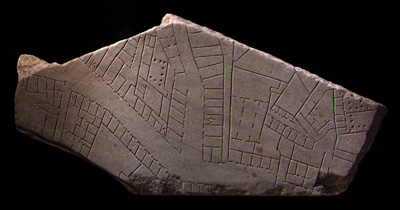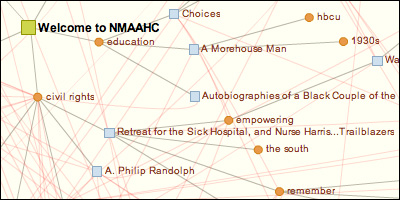Kleptomerican
Recently someone stole the American flag we’ve had flying outside our home for years. My wife and I each thought the other had taken it down because of high winds. Only later did we realize it had been snatched. The house doesn’t look right without it.

My wife is upset because it means some ill-intentioned stranger came up off the street and onto our porch. At night. With the kids sleeping just above. Meanwhile I’m pondering motivation. Does this mean the thief is aggressively pro-American or anti-American? You could make either argument. Of course, the real answer is likely that the burglar was aggressively drunk.
Guess I’ll have to booby trap the next flag. Maybe use the exploding ink packs that banks put in their money stashes. Yeah, I like that. I bet Colbert would too.
The Goblin Cock
Continuing the finest set of post titles in years, I now give you The Goblin Cock. It is, perhaps — nay, back up — it is certainly the finest culinary concoction I have ever come across.
Some background. Thelovelywife and I pawned the midgets off on my parents in the ‘burbs, so we had a “free” night. Said wife had been hungover all day after sailing through the perfect storm of girl drunkeness the night before: lots of girlfriends sitting in a circle bitching about others where wine was plentiful. She was hurting 24 hours later and desperately wanted a burger. So my brother, who makes a career of going out and sampling what the city has to offer, informs us that the best burgers in the city are just a few blocks away at a bar called Kuma’s Corner.
The menu is a vegetarian’s nightmare. Consider only the Slayer: fries on top of a half-pound of beef with chili, cherry peppers, andouille sausage, onions, cheese, and anger. Presumably this last ingredient is actually a description of your digestive tract’s reaction to the dish.
All the burgers are named after heavy metal bands (death, nu, thrash … I’m not a student of the sub-genres). And this is all the bar plays, loudly. The waitstaff clearly loves it, though I’ll say now that it did not exactly help my wife’s pounding headache. Yet the promise of the food kept us there, despite the sonic assault.
So, back to The Goblin Cock. Read that chalkboard again. A half pound burger slapped together with a quarter pound hot dog (which is huge), pickles, peppers, cheese, bacon (!), pick de gallo, relish, onion, tomato and a side (in case you’re picky) of mustard. True to Chicago form, ketchup is not allowed since the monstrosity has a hot dog on it. (In fact, they can’t even spell ketchup correctly the thought of it on a hot dog is so troubling.) No Blister Nuts, alas, but if one were to suggest it to them I bet they’d not be averse.
Encased meat as a garnish. Does it get any better than that? Perhaps not, but I was not man enough and merely got a burger with a fried egg on it. Even now though, hours later as I wrestle with the consequences of such a gut bomb, The Goblin Cock beckons me back.
This bar is not for everyone. They have an angle and they grind it. An enveloping blanket of noise, no mass-produced beer (except PBR, bless their hearts), and food prepared angstfully. But the bartenders and waitstaff were very personable and attentive. Highly recommended.
The Blister Nut
I love cashews. Eat ’em daily. And, truthfully, I have never wondered why they are so much more expensive than other nuts. Nor have I ever wondered why you never see a cashew in its shell. But others have and it turns out the answers are related.
Botanically, the cashew fruit is related to poison ivy and the shell (though not the nut itself) contains a substance called cardol which is extremely caustic and will cause a nasty rash. This is why the cashew is also known as the blister nut. (Why god why does that not have an entry in Urban Dictionary?)
It is also why they cost so much since harvesting them is inherently dangerous and there is no good mechanical way of shelling them. Shucking is done by (presumably glove-wearing) manual laborers who have to deal both with the possibility of contact and the fact that the cashew fruit is just damn ugly, lewd even.
So you got two options if you really want to eat a cashew shell. The first is to say screw it, eat it, ulcerate your mouth and swell up. The second is to roast the hell out of the cashew. This boils off the poison, but be careful: apparently even the smoke can cause severe reactions.
But it isn’t all bad. Apparently the oil can be used as rocket lubricant. Oh, and I really enjoy saying blister nut. Blister nut. Blister nut. Try it, you’ll agree.
It is a damn good thing this little bit of trivia was not delivered to me earlier in the day. I’d have wasted even more time fascinated by it. (But thanks Juan!)
If you squint hard enough you’ll see a pattern
Lots of little things going on in my life, none seemingly important enough to warrant a full post. But this does not stop the party, no.
A few weeks ago my wife performed the role of arm-candy (yeah, that’s right, she’s that good) for my brother at the ground-breaking event for the Calatrava Spire (called, alas, the Chicago Spire). My brother is the salesguy for all the in-unit automation at the Spire. When built this corkscrew will be the tallest building in North America and will redefine the skyline. Impressive site too.
If you are interested in knowing exactly the kind of video I can watch hundreds of times and still laugh, this is it.
I recently moved from my beloved Thunderbird to the Mac Mail app. Why? Better handling of IMAP. See, since I got an iPhone I have wanted it to be completely in synch with my desktop mail app (inbox, archive, sent, all of it). POP don’t cut it, so I had to move some 30,000 messages to the server. This took forever as Thunderbird (where it all lived locally) ain’t the stablest with IMAP servers. But it is done. I also wanted webmail so here’s how it works:
- All my addresses forward to GMail. Every single one.
- GMail, which does not support IMAP (sigh), archives a copy and punts to an IMAP server at my hosting provider.
- The iPhone and my desktop clients on PC and Mac all synch with the IMAP server.
- Outgoing mail on all is routed through the IMAP server and thence to GMail, so there is always a web-accessible copy.
A massive pain in the ass, but not nearly as bad as escaping Outlook.
We’ve undertaken an experiment with compact fluorescent bulbs. Nearly every light, including in utility rooms and closets, is strangely wired to a dimmer in this house, which makes things challenging. We replaced a bunch of dead incandescent cans in the kitchen (because, you know, it happens). Truly, they are cheaper for the life and wattage, but it does remind me a bit of a laboratory. Anyone have thoughts on CFL’s that don’t make think I should be titrating?
28 Weeks Later is an amazing movie. It is not a slasher flick or really a horror flick, exactly. It follows on the acclaimed 28 Days Later about a guy in a coma who wakes up in London to find Jolly Olde England overrun by zombies. This movie is, um, some time after that and shows what happens when the US Army (Mission Accomplished, baby!) quarantines a section of London for survivors. It is a fine flick and might contain the best scene in all of 2007 film. Let’s just say that it involves a field full of zombies and a helicopter. Oh, also, how can a film in which zombies sprint not be good?
I’m absolutely smitten with the audio/sequencer/DJ app called Ableton Live. It takes a while to wrap your head around, but once you do, it is pure heroin. I can’t not mess with it. More on this in an upcoming post on how I’ve left my job to be a terrible DJ at hipster bars.
In the category of links that did not make the del.icio.us feed but which I strangely feel important enough for a full post we have Wakerupper. It offers free telephone reminders with an iPhone-optimzed version to boot. And GrandCentral, one of Google’s acquisitions to centralize phone stuff in a web interface (hey, not unlike what I just did with IMAP). Anyone using this have some tips on how to make me not so scared of it?
Keep squinting.
How not to run a marathon
And I don’t mean the kind of running that takes two legs and an iron will. Yesterday the Chicago Marathon fell apart.
Among people who submit their bodies to long-distance running, the Chicago Marathon is consistently a favorite. Flat as a pancake, super-scenic, lined with cheering throngs, and great weather … well, usually. Yesterday the thermometer topped 88°F and it was disgustingly humid. A terrible day to run a marathon. An even worse day to run a marathon filled with first-timers and novices.
My wife ran about ten miles of the 26.2 as a unregistered supporter for a friend. Those ten miles were not continuous as she, like thousands of others, had to bow out at various points because the conditions were so brutal. People were dropping like flies. The omnipresent cheering that makes this race so much fun was accompanied almost the entire route by the sound of ambulance sirens.
The race organizers had a number of tough decisions to make yesterday. Run the race at all? When is enough enough? And, hardest of all, what to do for the runners who could clearly make it to the end?

Photo by BrokenBat
They let the race go off. The heat climbed fast. Discussion forums are alight with charges of empty water stations along the route* (and just as many saying they were stocked just fine). But clearly it was dangerous to let the race go on. At the halfway distance at about 11:30 (3.5 hours after the race started) runners were told to stop and were re-routed back to the start. Huge bummer for the participants, I’m sure, but if you’ve only run 13 miles in 3.5 hours something is clearly wrong so I don’t have a huge problem with this decision.
But then, shortly thereafter, around mile 20 police got on bullhorns: “Attention runners, the marathon has been canceled. You can stop running, now.” Can you imagine? If you’ve made it this far you’re going to want to finish. And can they really make you stop? They could close the course, but they can’t make you get off the sidewalks.
The organizers say this was done because of fear of the runners’ safety. Others are claiming that it is because the city was out of emergency service vehicles (402 people were hospitalized as of last night) — which of course is the same thing with a twist.
Either way, this is hugely disappointing to anyone who cares about a Chicago Olympics bid. If I were Mayor Daley I’d be livid. Every sporting event this city hosts from now until 2009 needs to be organized and run with laser-precision. We need to show the world that we can run a massive event and protect our athletes.
[*] And before you ask, no, my wife was not contributing to the water shortage. She was a bandit, but a bandit with her own refreshment.
Human after all
Two weeks ago, in addition to launching a project, I was in DC to meet with a bunch of people that work in the relatively new field of technology-juiced humanistic research. You scratch your head at that — and fair enough. The field is barely a decade old.
When I was in English graduate school in the mid-90’s I envied the small group of university researchers who cared little about the conventional wisdom of left brain-right brain and who pounded down the doors of their engineering and computer science colleagues across campus to start what’s loosely known as computational humanities. It isn’t a hard concept to grasp, though I am sure you are imagining tweedy, bespectacled bookworms accidentally reformatting DOS drives. There’s a lot of truth to that image*, even now, but like any stereotype it exists only as counterpoint to what is actually happening outside the mainstream.
This is no place for a history of the field (though that would make an interesting monograph). Suffice to say that, in my mind anyway, the grand-daddy of these programs is the Institute for Advanced Technology in the Humanities at Virginia. I’ll offer one example from IATH that I think well-defines the kind of new knowledge that can come from the you-put-your-chocolate-in-my-peanut-butter mashup of computers and the humanities.
It is called the Digital Forma Urbis Romae Project and is led by David Koller.

In ancient Rome there was a gigantic marble map of Rome that displayed every road in the city including internal layouts of buildings. This map, called the Forma Urbis, was pulled down and fragmented in the Middle Ages for scrap — and the world lost a perfect snapshot of the way Rome was. Thousands of the fragments of this map have been found scattered in digs all over Rome. For 400 years scholars have been manually attempting to reform this 3D jigsaw puzzle, and not very successfully. What Dave did is scan every single known piece in three dimensions and then build a few different algorithms for matching them up. He was able to piece together much of the map, doing in a few weeks more than had been done in centuries. The picture of the municipal layout, architecture, and patterns of life that the map depicts are an invaluable resource.
There’s more than IATH, though. The University of Maryland also has a cross-disciplinary program called MITH for, yes, the Maryland Institute for Technology in the Humanities. Judging from the fact that they asked me to speak there you might think the work they are doing is qualitatively less impressive than IATH’s. But you would be wrong. And if you still doubt, have a listen at all the tough questions they threw my way at the end of this recording.
Not to be outdone by academia — or rather, in order to ally forces — the NEH has a digital humanities program aimed squarely at supporting projects that put technology in the service of humanist inquiry. Most recently they are working to match up researchers with supercomputing resources, some at the Department of Energy (you know, the folks that have those nuclear explosion-modelling boxes**).
That’s the next frontier, really: what can you do with a truckload of data and an enormously powerful computer? Definitively prove or disprove the authorship of Shakespeare? Map out the journey of an idea across all known writings/art through the ages? Reconstruct a collapsed temple from thousands of pieces of heaped stone? Researchers are only just beginning to ask these questions in a way that is not rhetorical or just a flat out joke. What can WOPR do for you?
[*] It isn’t just humanities scholars. My neighbor in grad school was a computer science professor who would occasionally come over for basic Windows help. He didn’t even use a computer. All theory, all math, he taught.
[**] I have this funny image of a English professor politely asking a nuclear physicist to pause his simulation at 100,000 casualties so that he could load his corpus of Emily Dickinson writings into the supercomputer.
Sto-Mo
So here’s our first test of stop-motion animation with LEGOs. My son and I have grand plans to create our own alternate storylines. But given the difficulty in creating even this C-grade animation we may be scaling back our vision. Still, this is really fun.
Couple things:
- Lighting is the hardest part. LEGOs are shiny. Really need a diffuse light tent.
- Timing is the second hardest part. You can calculate shots per second, of course. But even then you have to be constantly doing math for dramatic pauses and such.
- iStopMotion is an invaluable app if you are interested in this sort of thing. Easy enough to do with a regular digital camera, but iStopMotion lets you use an iSight and leaves the last frame semi-transparent on the screen so you can see what you are trying to line up with.
- That’s a half-destroyed Hutt sail barge in the background.
- Shout out to Wilhelm.
The inspiration for this little family project was my son coming across the hardcopy of a flipbook animation I mentioned in this post years ago.
Pothole-in-one
On my stroll home with coffee today I was greeted by a paving truck and steamroller right in front of our house. I figured the city had finally sent a crew out to fix the gaping sinkhole in the street whose maw was slowly enlarging from Vespa-sized to VW Bug-sized. But no. They were there to pave over a small correction to a manhole.
All three of my kids (in pajamas) ran out to see Men Working With Construction Equipment and we had ourselves a little morning entertainment. Over the clamor, I gestured towards the sinkhole to the crew in the international sign language of “Um, you aren’t going to repair that obvious hazard?” They ignored me. So we brought them some bottles of Propel. The foremen yelled back “You didn’t see nothin’ here” and proceeded to back the dumptruck up to the hole and fill it in. Now, of course, there’s a structural problem under the street. The hole will simply degrade over time and suck in the new asphalt. But, hey, it is fixed for now with no extra bitching to the city to get it done.
This is how things are done in this city. Not saying it is right, just how it is. But I can imagine worse ways of getting things done.
This episode reminded me of a similar, though much more exciting, street scene from a few years back. I blogged it on another, private site, but copy it here for your pleasure.
Boys like trucks. Especially when it is a garbage truck on fire that is being doused by a fire truck right in front of our house. Oh the joy! My son and I were returning from breakfast and saw a garbage truck — in fact our garbage truck with our garbage men on it — with smoke pouring out of the back. A fire engine had just pulled up and the crew was unravelling the water hoses. Luckily this was right at the bar three houses down from us so we perched on the sidewalk bench and got a front row seat to a spectacle way cooler than anything we could have Tivo’ed.
But it got better. They started hosing down the truck, but seemingly could not find the source of the fire. What to do? Dump the entire load of trash on the street of course! YES! My son’s eyes were platter-sized as it all came crashing onto our street in a soaking, stanky, smouldering heap. This necessitated opening the fire hydrants. I think we might have applauded. You just can’t describe the feeling of watching smoking refuse wash down the gutter of your own street. They really started hosing the pile off and it seemed to work.
The best part was the coming together of such a fine group of Chicago Guyz. Firemen, Policemen, Garbagemen, and other city officials with no real role congregated and shot the breeze like this was an everyday occurence which, perhaps, it is. You just wanted to grab your crotch and say “fuck” watching these guys do their jobs.
To top it all off, one of the firemen beckoned my son to approach the Engine. Nevermind that there was still a fire in the middle of our street. Engineer Joe plopped hime in the driver’s seat of the truck. I was as happy as my boy was. Driving a fire truck is simply cool.
The only thing that would have made it even better is if a “scoop” — those of you with children who watch Bob the Builder will know what this is — arrived to clean up the crud. In fact after we took my son to camp, a scoop did arrive. Thelovelywife noted at the time that given the number of Union-mandated coffee and cig breaks for the city workers he might well make it home in time to see the scooping.
Ah, city life.
Lens
I’m working on a project right now that’s an honest-to-goodness social network. Gee, that’s what the world needs more of, you hiss. But it is different. No, really. Hope to launch by the end of the year.
Anyway, one of the things we’re grappling with is the idea of using someone’s profile as a filter for the web. It sounds simple, but it is a profound thing when you consider that my profile, say on Facebook, is the sum of the biographical info I’ve entered, the friends I have, the apps I’ve chosen, the posts I’ve made, the conversations I’m in, plus every other feed I have spliced in from around the web. It is a web snapshot of my behavior and my perspective.
Now what if you could be shown the web through this perspective? That is, what if you could filter your searching based on the lens that is my profile? Just another filter (like by file type, date, or geo) but this filter is the sum of another person’s (or group’s) outlook. Could be cool, no? Some call it social search, but it really is much more than that. And of course it is mostly conceptual at this point. Who knows if we’ll actually get it implemented.
Recently I was the guest editor contributing to the daily flow of links at Coudal Partners called Fresh Signals. It was during this month of link-harvesting that the practical application of lensing hit me. I come across hundreds of links each day, but the truth is that I was manually filtering by trying to assume the perceived perspective of the Coudal crew. I was trying to look at the web through Coudal’s eyes. It worked, mostly, though being imprecise (that is, human) the process produced links that had a flavor of my own.
Right now the best blogs are precisely this: content from all around the web manually sluiced through the personal perspective of the site author(s). This is a good thing. But you can imagine a day when a person’s perspective — such as it is online — can be easily used as just another search filter.
The National Museum of African American History and Culture
It doesn’t have a building and it doesn’t have a collection*, but today the newest museum in the Smithsonian family is open to the public on the web. The National Museum of African American History and Culture’s Museum on the Web is the first cultural institution that I know of to fully embrace the bottom-up contributions of web-users in an effort to populate itself with stories, photos, and media, oral-history style.
This functionality, called the Memory Book, permits site visitors to compose and upload their own “memories” about anything having to do with the African American experience. The posts can be tagged and are plopped into a visualized web of topics and other memories, forming what is hoped over time will become a rich, dense tapestry of interconnected stories. The Memory Book also contains the bulk of the museum’s material on the major figures and events in African American history. You can for instance, tag your memory “civil rights” and see it enmeshed in the same web of relations of the major figures relating to the movement.
There is some great stuff in there. Here’s a taste of one of the entries called Negro Girl Changes the Color of Classrooms:
I was four years old. The youngest of seven children. I could not read. But I could watch TV. Seeing my big sister on TV made me know she was either a movie star or she was in BIG trouble. Years later, I learned it was a little of both.
Hooray intangible culture and compelling storytelling. And double hooray for the museum’s small staff for truly embracing the concept of a museum for the people, by the people.
This is the latest project by IBM in the cultural space, my first major launch for an institution in the United States. (And my first project built on Ruby on Rails.) I’m proud of the accomplishment and exceptionally so of my team.
The Washington Post has a short story on the Museum on the Web.
UPDATE: a bit of local flavor in the Chicago Tribune and the official write-up at IBM.
[*] But it does have a spot on the Washington Mall, the last slot on the north side just east of the Washington Monument.

















